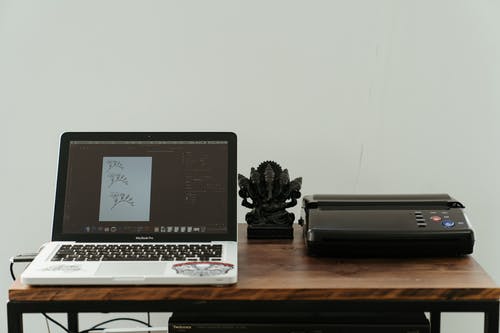Choosing the Right Stencil Format for your Application
When using stencil printers, there are a lot of different options for a wide range of applications. That’s why choosing the right stencil can make a huge difference, and it’s something you need to take considerable care over. You need the right stencil for the right job, so in this article we’re going to look at some tips to help make sure you’ve always got what you need. Let’s have a look at how to choose the right stencil for your printing job.
Stencil formats:
Remountable stencils
With stencil printing in the past, the tension given by meshed stencils could not always be replicated, which leads to problems with image stability. That’s why four-sided transition frames were created for remountable stencils that could enable proper tension and a longer life for the stencil. Remountable stencils are therefore a great additional to the stencil industry, they save space, cut costs and are easier to clean.
Genesis stencils
With Genesis stencils, foils can be interchanged quickly and held completely flat at all times, maintaining tension across the entire stencil.
This is done without any adhesives, which means degradation does not occur over time.
OptiGuard
OptiGuards have been designed and patented for use with VectorGuard frames, and use pin bars to mount foil into an aluminium profile. This makes the system ideal for multi-level stencils and can be used well with laser-cut or framed stencils.
TetraBond
TetraBond was created to provide a simple system for mounting and demounting safely. With this system, foils are mounted into an aluminium extrusion and are backwards compatible with many other frames in the stencil printing industry.
Additional stencil formats
There are a wide range of additional stencil formats that are used successfully in stencil printing today. These include a wide range of alternative remountable framing systems, like Tecfoil, Apex, FTS, ZelFlex and LPKF.
Meshed stencils
Some operators still prefer to use an older standard of stencils for certain jobs—notably traditional meshed stencils. For the best results, only the highest quality of these meshed stencils are recommended, to maintain tension even after the stencils have been in use for a while. These types of stencils can degrade more quickly, especially when used in conjunction with certain cleaning products.
Stencil thickness
Stencil thickness is an important consideration when setting up for a specific print job. The thickness of a stencil will determine the volume of solder that is available for printing.
Aperture design modifications can be compromised if you don’t select the right thickness, leading to a printing process that is not optimised and could go wrong.
Multi-level stencils
Many modern printing solutions use a preferred method of multi-level stencils these days. This is because they are believed to give much better printing outcomes and quality as well as having the best paste release properties. Multi-level stencils also have a number of other benefits including reduced paste bridging, higher yields and fewer print defects.
Under-routed stencils
Under-routed stencils can be placed on the underside of a stencil to make sure thicker solder can be applied to provide the next level in stencil gasketing.
Stencil aperture designs
It can be a good idea to make sure that apertures sizes are reduced. As a PCB fabricator, it can be a good idea to understand how all this works in order to get the best printed results. You shouldn’t create aperture footprints if the PCB has over-etched features.
Losing parts of a stencil to PCB gasketing surface can lead to contamination, bleeding and more problems with the print job.
Stencil aperture shapes
Only reducing all apertures by a global amount or percentage will not offer all the benefits of specific reductions or bespoke aperture shape modifications that have been created for individual components on a standalone basis. This could lead to assembly defects or problems at the end of the line. For engineers that are used to seeing problems but might not know how to solve them, there is additional help available from third-party stencil specialists.
There are a wide range of stencil shapes for all sorts of uses in the stencil printing industry, these include square, round, radiused rectangle and oblong.
Mid-chip solder ball elimination
When you get solder balls or solder beading, it could be because of excess solder paste underneath non-wetting surfaces. When used in reflow, this paste has not been able to retract and results in squashing underneath the component.
Making sure you’ve got all the right equipment, and a full understanding of the entire process, and be important in ensuring the best setup for your prints, and ultimately the best results. Constant maintenance and spot checks are also important so that any defects can be found and solved as soon as possible, before ruining an entire print, costing time and money.

